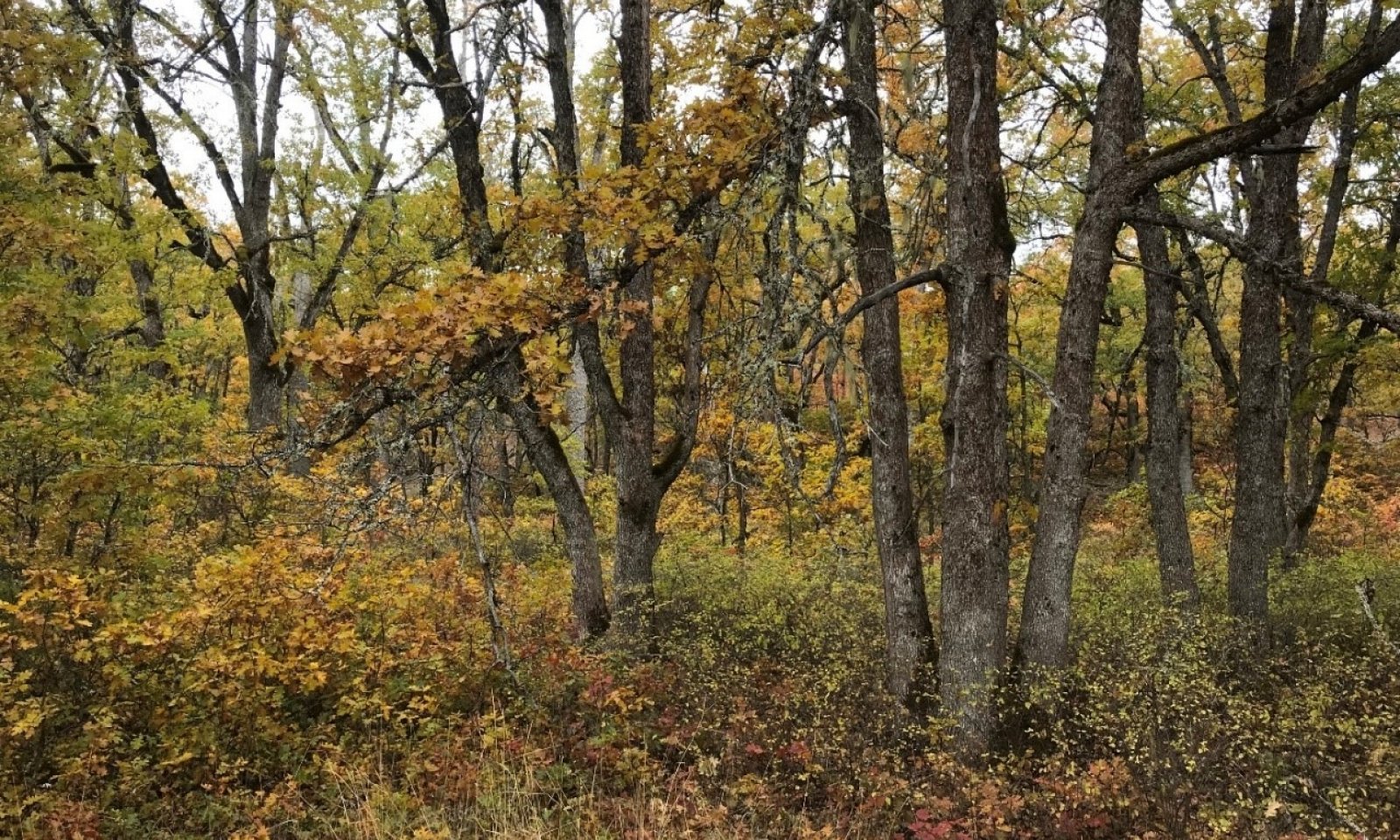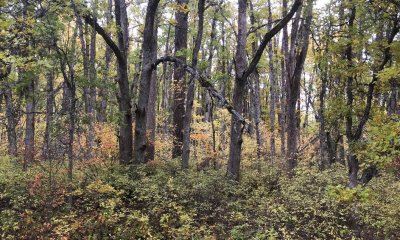
Mesic Xeric Slopes and Flood Plains (Oregon white oak-Ponderosa Pine Hot Moderately Dry Shrub)
Scenario model
Current ecosystem state
Select a state
Management practices/drivers
Select a transition or restoration pathway
-
Transition T1A
Fire suppression
More details -
Transition T1B
Land conversion
More details -
Restoration pathway R2A
Selective thinning and prescribed burns
More details -
Restoration pathway R3A
Planting trees/shrubs
More details -
No transition or restoration pathway between the selected states has been described
Target ecosystem state
Select a state
Description
In pre-European times oak stands were more open due to frequent low intensity ground fires every 5 to 30 years, many started by native Americans. Conifers like ponderosa pine and Douglas-fir were not a dominant part of the overstory. Native grasses, sedges, and shrubs were abundant in the understory. Large diameter oaks existed due to less competition from other oaks and conifers.
Major insects affect white are western oak looper, western tent caterpillar, and Pacific tent caterpillar. Major diseases are armillaria and oak anthracnose.
Major insects that cause mortality in ponderosa pine are the western pine beetle, mountain pine beetle, and pine engraver beetle. The western and mountain pine beetles can kill mature to old growth pine. The pine engraver beetles attack and kill young pole size stands. Drought and tree to tree competition cause stress which increases bark beetle mortality. Other insect concerns in pine include the following defoliators: Pandora moth, pine butterfly, sawflies, and needle miners.
Major ponderosa pine diseases include Annosum and Armillaria root rot, commandra rust, and elytroderma needle disease, Dwarf mistletoe is a major concern infecting over 25 percent of ponderosa pine acreage. It is more serious in the drier ponderosa pine sites. It also can spread more readily in dense stands lacking frequent fire cycles. Douglas-fir mistletoe can also be a concern when Douglas-fir occurs.
Submodel
Description
Long intervals of fire exclusion have increased stand density in oaks and advanced the encroachment of pine and fir. Ladder fuels increased by shrub layer Much of the area in this condition. Stand replacing or mixed severity fires are the norm with the loss of larger diameter oaks. Oak can replenish site through sprouting, however, wildlife habitat loss due to large oak mortality.
Submodel
Description
Throughout the history of settlement these oak stands were near lower elevation areas used by the indigenous people and European settlers. Respective to that, these oak stands have been altered by cutting, overgrazing, and conversion to other land uses.
Submodel
Mechanism
Fire suppression increased both stand density in oaks and also the abundance of ponderosa pine and Douglas-fir in the overstory. Native understory shrubs increase in size producing ladder fuels.
Mechanism
Selective thinning of white oak and conifer removal followed by prescribed burning. Fuel loads assessed before any prescribed burning.
Model keys
Briefcase
Add ecological sites and Major Land Resource Areas to your briefcase by clicking on the briefcase (![]() ) icon wherever it occurs. Drag and drop items to reorder. Cookies are used to store briefcase items between browsing sessions. Because of this, the number of items that can be added to your briefcase is limited, and briefcase items added on one device and browser cannot be accessed from another device or browser. Users who do not wish to place cookies on their devices should not use the briefcase tool. Briefcase cookies serve no other purpose than described here and are deleted whenever browsing history is cleared.
) icon wherever it occurs. Drag and drop items to reorder. Cookies are used to store briefcase items between browsing sessions. Because of this, the number of items that can be added to your briefcase is limited, and briefcase items added on one device and browser cannot be accessed from another device or browser. Users who do not wish to place cookies on their devices should not use the briefcase tool. Briefcase cookies serve no other purpose than described here and are deleted whenever browsing history is cleared.
Ecological sites
Major Land Resource Areas
The Ecosystem Dynamics Interpretive Tool is an information system framework developed by the USDA-ARS Jornada Experimental Range, USDA Natural Resources Conservation Service, and New Mexico State University.




